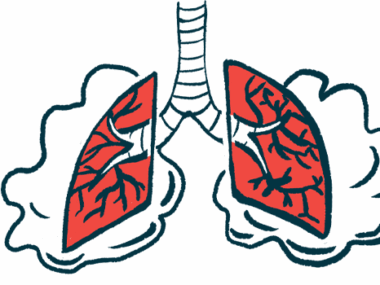Inhaled antibiotics linked to increased risk of fungal infections
Researchers suggest doctors assess risks, benefits when prescribing treatment
Written by |

Using inhaled antibiotics can help control the growth of certain bacteria in the lungs, but it may increase the risk of fungal infections with Aspergillus fumigatus in people with cystic fibrosis (CF), according to a study.
The study, “Association between inhaled antibiotic use and treatment-emergent organisms among Canadian people with cystic fibrosis,” was published in the Journal of Cystic Fibrosis by a team of researchers in Canada, who said long-term research is needed to guide safer treatment choices.
In CF, thick, sticky mucus accumulates in the lungs, trapping bacteria and other microbes, which makes it difficult for the body to clear infections effectively.
To treat bacterial infections, doctors often prescribe inhaled antibiotics, medications breathed directly into the lungs to control the growth of bacteria and prevent worsening of respiratory symptoms.
These inhaled antibiotics are effective against bacteria such as Pseudomonas aeruginosa, which can cause serious infections, but they may also allow other harmful microbes to grow in the lungs. This is known as risk of treatment-emergent respiratory microorganisms, new bacteria or fungi that appear after treatment begins.
Canadian registry provides data for study
To find out how commonly people with CF use inhaled antibiotics, and whether these increase the risk of developing other lung infections, such as those with A. fumigatus fungi or the bacterial species Stenotrophomonas maltophilia or Achromobacter, the researchers drew on data from the Canadian CF Registry between 2015 and 2019.
The study looked at data from 2,800 children and adults diagnosed with CF. In 2016, patients with chronic (ongoing) infections caused by P. aeruginosa were an average of 12.3 years older than those with occasional infections (30.6 vs. 18.3). They were also more likely to have CF-related diabetes (28.5% vs. 12.2%).
Most of the patients with chronic infections (75.9%) were using inhaled antibiotics, mainly tobramycin. Some patients who tested negative for P. aeruginosa (13.6%) were prescribed these medications during the study period.
From 2016 to 2019, the proportion of patients with chronic infections caused by P. aeruginosa decreased slightly, from 32.9% to 30.3%. However, the use of inhaled antibiotics increased, from about 75.9% to 81.5%. In contrast, there were no changes in the use of inhaled antibiotics by patients with occasional infections or in those who tested negative for the bacteria.
Among patients with chronic infections caused by P. aeruginosa, those who were older or had better lung function were less likely to be prescribed inhaled antibiotics. Those on Orkambi (ivacaftor/lumacaftor), an approved treatment for CF, were more likely to be on inhaled antibiotics.
Among those who were negative for P. aeruginosabeing, the use of Orkambi or Symdeko (tezacaftor/ivacaftor), also approved to treat CF, increased the odds of being prescribed inhaled antibiotics. Other factors that increased these odds included recent periods of worsening respiratory symptoms or infections with A. fumigatus.
Overall, people with CF who used inhaled antibiotics had a 69% higher chance of growing A. fumigatus in their lungs. The risk was 144% higher in those who were negative for P. aeruginosa and 43% higher in those with intermittent P. aeruginosa infections. The risk was not higher in those with chronic P. aeruginosa, where the increase was not significant.
Inhaled antibiotics were not linked to a higher risk of getting S. maltophilia or Achromobacter infections.
“Future inhaled antibiotic guidelines should take into account their benefits and risks based on clinical characteristics,” the researchers wrote. In addition to closely monitoring for side effects and treatment-emergent respiratory microorganisms, doctors should “consider opportunities to withdraw these antibiotics when clinically appropriate,” they added.







